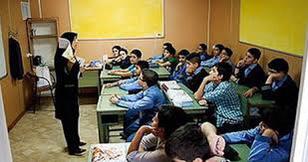The education system in Iran has unique characteristics and structures that are influenced by the country’s culture, history, and policies. Generally, the education system in Iran is divided into three main stages: primary, secondary, and higher education.
- Primary Education: This stage includes six years of schooling and children enter at the age of six. The focus in this period is on basic skills such as reading, writing, and arithmetic.
- Secondary Education: This phase is divided into two three-year segments: lower secondary and upper secondary. In lower secondary, students go through a general curriculum, while in upper secondary, they choose major tracks like Science-Mathematics and Humanities-Literature. Other specializations like Literature and Human Sciences are also available.
- Higher Education: Universities and higher education institutes in Iran are both public and private. Access to public universities is usually through a national competitive examination called the Konkour. Iranian universities offer undergraduate, master’s, and doctoral programs.
In addition to these, the Iranian education system is unique due to its emphasis on specific cultural and religious subjects. The system also faces challenges like the need to update educational content and approaches, balancing theoretical and practical training, and providing equal educational opportunities for all citizens.
 Zagros International University
Zagros International University
